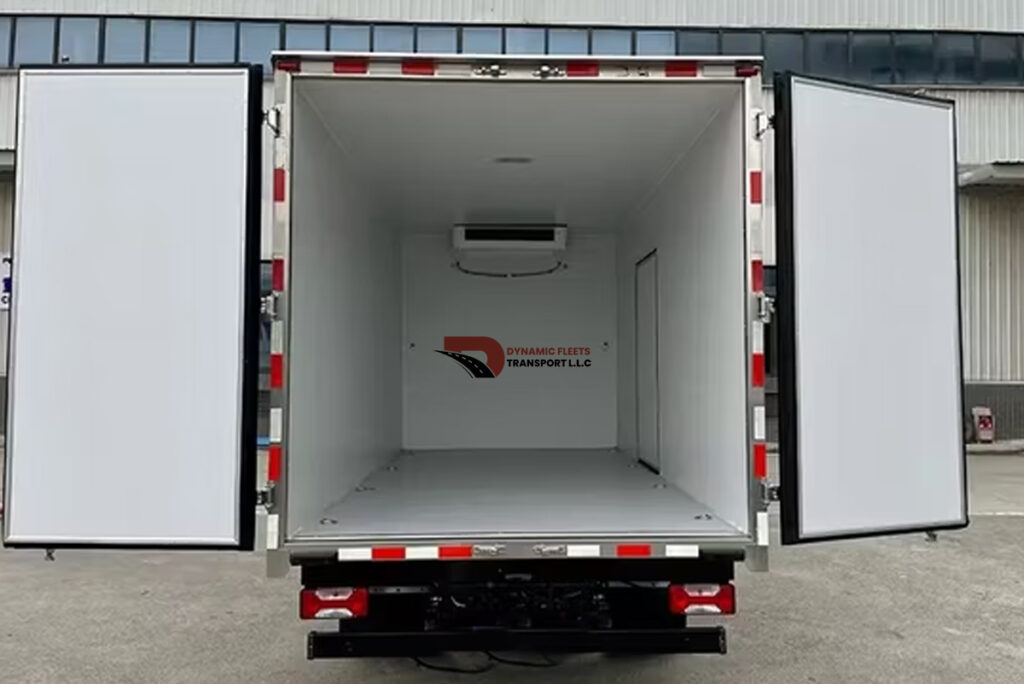
Chiller Vans for Holiday Catering
Why Chiller Vans Are Essential for Holiday Catering
1. Keeps Food Fresh and Safe
Temperature fluctuations can cause food to spoil quickly, leading to waste and potential foodborne illnesses. Chiller van rental help maintain the right temperature, ensuring that perishable items like meats, dairy products, and desserts remain safe and fresh.
Food Type | Recommended Temperature |
Fresh Meat & Poultry | 0°C – 2°C |
Dairy Products | 1°C – 4°C |
Frozen Foods | -18°C or lower |
Desserts & Cakes | 2°C – 5°C |
2. Prevents Last-Minute Delivery Issues
The holiday season means increased demand, traffic congestion, and tight schedules. A properly maintained chiller van prevents unexpected breakdowns, ensuring that food reaches its destination on time and in perfect condition.
3. Meets Food Safety Regulations
Many countries, including Dubai, have strict food safety regulations, especially for transporting perishable goods. Chiller vans help businesses comply with HACCP (Hazard Analysis and Critical Control Points) and Dubai Municipality guidelines, avoiding fines and legal troubles.
4. Enhances Business Reputation
Catering businesses that consistently deliver fresh, high-quality food build a strong reputation. Customers appreciate food that arrives at the right temperature, tastes delicious, and is safe to consume. A well-maintained chiller van ensures customer satisfaction and positive reviews.
How Chiller Vans Work
Chiller vans are designed with advanced cooling systems to maintain the ideal temperature for transporting perishable food items. Here’s how they function:
1. Refrigeration Units
Chiller vans come equipped with powerful refrigeration units that regulate temperature throughout the vehicle. These units work continuously to prevent temperature fluctuations.
2. Insulated Interiors
The van’s interior is built with thermal insulation to retain cold air and prevent external heat from affecting the stored food.
3. Temperature Monitoring Systems
Modern chiller vans have temperature monitoring devices that allow real-time tracking. This ensures food remains within the safe temperature range, preventing spoilage.
4. Backup Cooling Systems
To avoid temperature fluctuations due to power failures or mechanical issues, some chiller vans are equipped with backup cooling systems to keep food fresh.
Best Practices for Using Chiller Vans During Holiday Catering
To ensure a smooth and efficient holiday catering service, follow these best practices:
1. Pre-Cool the Van Before Loading
Before placing food inside, pre-cool the van to the required temperature. This helps maintain a stable environment, reducing the risk of spoilage.
2. Properly Pack and Arrange Food
Stacking food improperly can lead to uneven cooling. Use insulated containers and arrange items to allow proper airflow inside the van.
3. Monitor Temperature Throughout the Trip
Use real-time temperature monitoring systems to track temperature levels. This helps prevent sudden fluctuations that could affect food quality.
4. Limit Door Openings
Every time the van doors are opened, warm air enters, affecting the internal temperature. Train delivery staff to minimize unnecessary openings.
5. Regular Maintenance of Refrigeration Units
Schedule routine maintenance for cooling systems, temperature sensors, and insulation to prevent breakdowns during peak hours.
6. Plan Efficient Delivery Routes
Traffic congestion can delay food deliveries, causing temperature fluctuations. Use GPS tracking and optimized route planning to ensure timely deliveries.


Common Issues with Chiller Vans & How to Solve Them
Issue | Cause | Solution |
Temperature fluctuations | Frequent door openings | Minimize door usage & use insulated boxes |
Uneven cooling | Overloading or improper food placement | Arrange food to allow proper airflow |
Equipment failure | Lack of maintenance | Regularly service refrigeration units |
Delayed deliveries affecting freshness | Poor route planning | Use GPS & plan routes efficiently |
FAQs
What is the ideal temperature for transporting holiday catering food?
It depends on the type of food:
- Frozen foods: -18°C or lower
- Dairy & desserts: 2°C – 5°C
- Meat & seafood: 0°C – 2°C
How can I ensure food remains fresh during long deliveries?
Use a chiller van with a backup cooling system, monitor temperature regularly, and plan efficient delivery routes to avoid delays.
Are there legal requirements for using chiller vans for food delivery in Dubai?
Yes. The Dubai Municipality enforces strict food safety regulations, including HACCP compliance, requiring proper temperature control during food transportation.
What should I do if the chiller van’s temperature rises unexpectedly?
Immediately check the cooling system, minimize door openings, and if necessary, transfer food to another properly cooled vehicle to prevent spoilage.
How often should a chiller van be serviced?
To ensure reliability, conduct monthly maintenance checks and schedule a full inspection every six months.
Conclusion
The holiday season is a critical time for catering businesses, and ensuring fresh and safe food deliveries is essential. Investing in a well-maintained chiller van helps prevent food spoilage, ensures regulatory compliance, and enhances customer satisfaction.









